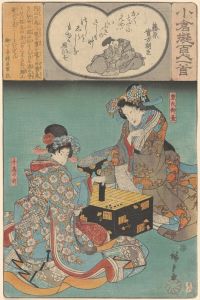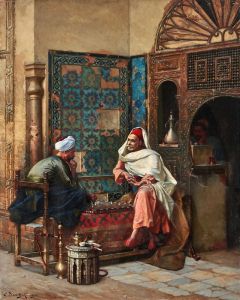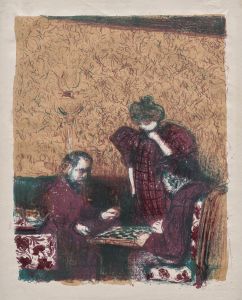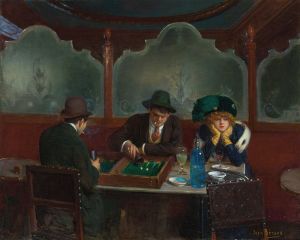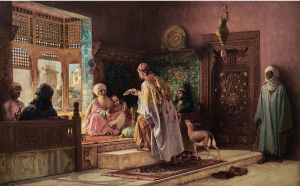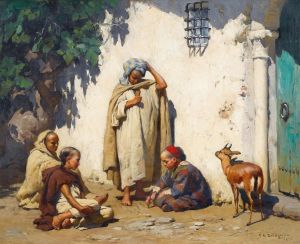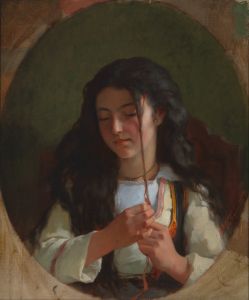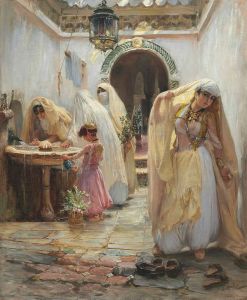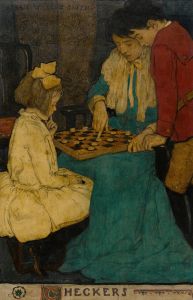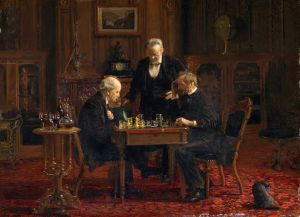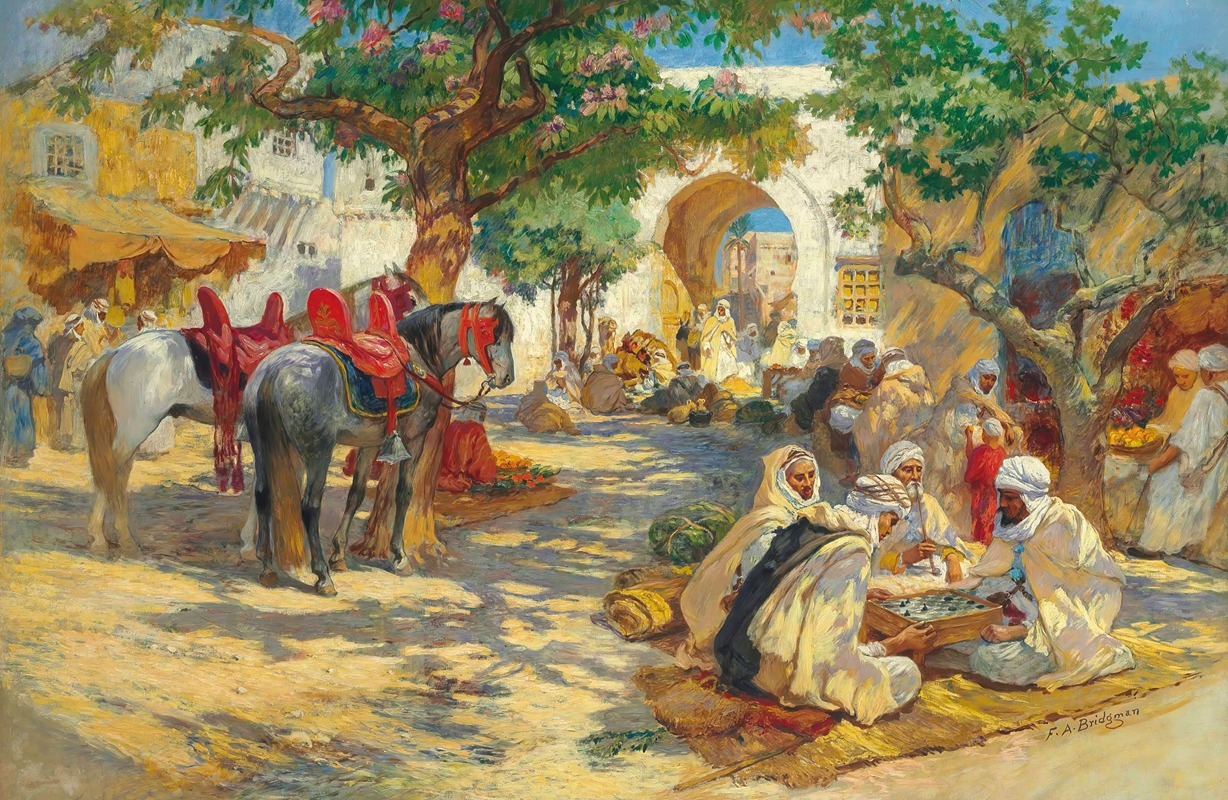
Chess Players, Biskra
A hand-painted replica of Frederick Arthur Bridgman’s masterpiece Chess Players, Biskra, meticulously crafted by professional artists to capture the true essence of the original. Each piece is created with museum-quality canvas and rare mineral pigments, carefully painted by experienced artists with delicate brushstrokes and rich, layered colors to perfectly recreate the texture of the original artwork. Unlike machine-printed reproductions, this hand-painted version brings the painting to life, infused with the artist’s emotions and skill in every stroke. Whether for personal collection or home decoration, it instantly elevates the artistic atmosphere of any space.
Frederick Arthur Bridgman was an American artist known for his detailed and vibrant depictions of scenes from the Middle East and North Africa. His painting "Chess Players, Biskra" is one of his notable works that captures the essence of Orientalist art, a genre that sought to depict the cultures and landscapes of the East as seen through the eyes of Western artists.
"Chess Players, Biskra" was created during a period when Bridgman was deeply influenced by his travels in Algeria and other parts of North Africa. Biskra, a city in northeastern Algeria, was a popular destination for artists and travelers during the 19th century due to its picturesque landscapes and vibrant cultural life. Bridgman visited Biskra and was inspired by the local customs and daily life, which he sought to capture in his artwork.
The painting itself depicts a group of men engaged in a game of chess, a pastime that has been enjoyed across cultures for centuries. Bridgman's attention to detail is evident in the intricate patterns of the men's clothing, the textures of the surrounding environment, and the focused expressions on the players' faces. The setting is likely an outdoor or semi-outdoor space, typical of the social gathering places in Biskra where people would meet to play games, discuss, and relax.
Bridgman's use of light and color in "Chess Players, Biskra" is characteristic of his style, which often featured warm, earthy tones and a keen interest in the effects of light and shadow. This approach not only adds depth and realism to the scene but also enhances the exotic and inviting atmosphere that Bridgman aimed to convey in his Orientalist works.
As an artist, Bridgman was part of a larger movement of Western painters who were fascinated by the East, often romanticizing and idealizing the cultures they depicted. While this genre has been critiqued for its sometimes stereotypical and colonial perspectives, Bridgman's work is also appreciated for its artistic merit and the skill with which he rendered his subjects.
"Chess Players, Biskra" reflects Bridgman's ability to capture the quiet moments of everyday life, offering viewers a glimpse into a world that was both foreign and fascinating to Western audiences of his time. The painting remains a testament to Bridgman's talent and his contribution to the Orientalist movement in art.
Today, Bridgman's works, including "Chess Players, Biskra," are held in various collections and continue to be studied for their artistic and historical significance. They offer insights into the 19th-century Western perceptions of the East and serve as a reminder of the complex interplay between art, culture, and history.





